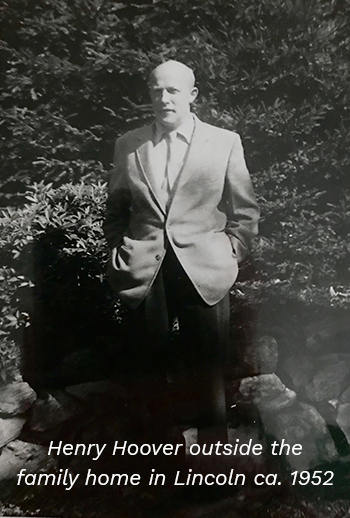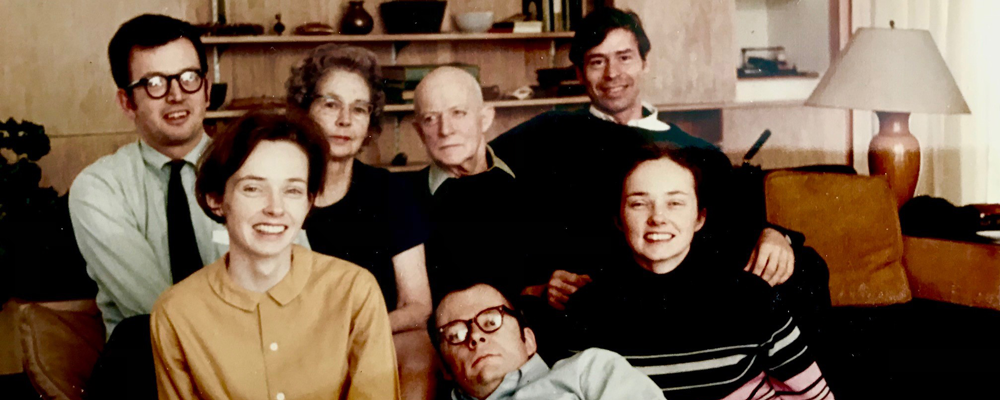Building a Future at Harvard: The Henry B. Hoover Fellowship
Henry B. Hoover March ’26 is considered a pioneer of New England modernist architecture. He designed more than 50 modern houses in his hometown of Lincoln, Mass., and other suburbs west of Boston, as well as houses in New Hampshire, Georgia, and Florida.
The quality of his GSD education and the financial assistance Hoover received at Harvard inspired his three children—Henry B. (Harry) Hoover, Jr., Lucretia Hoover Giese PhD ’85 (1937-2018), and Elizabeth Hoover Norman PhD ’05 (1937-2010)—to establish the Henry B. Hoover Fellowship at the GSD in 1989. Since then, further outright, planned, and estate gifts from the siblings ensure that their father’s legacy lives on.
 A portion of the sale of the family home in Lincoln, which their father designed in 1937, was added to the Hoover Fellowship in 2020 through a bequest from Lucretia’s estate and this year a charitable gift annuity from Harry brought the endowed fund to full fellowship status. This long-term commitment has made it possible for the GSD to award the fellowship to a student every year.
A portion of the sale of the family home in Lincoln, which their father designed in 1937, was added to the Hoover Fellowship in 2020 through a bequest from Lucretia’s estate and this year a charitable gift annuity from Harry brought the endowed fund to full fellowship status. This long-term commitment has made it possible for the GSD to award the fellowship to a student every year.
“I’ve been honored to meet these awardees and even give them a tour of my father’s architectural work in my town of Lincoln and other communities,” Harry said. “They come to know Hoover as a person who had aspirations and experiences just like they have now.”
“The training he received at Harvard was so important to him,” Lucretia had said. “That’s why we decided to establish a fund to provide scholarships to students who would not otherwise be able to attend Harvard. Our father had received a scholarship that enabled him to study at Harvard. The support of his professors, especially George H. Edgell (then dean of the School of Architecture), profoundly affected his career.”
“All three of us revered our father,” Harry said of himself and his sisters. “This fellowship was a natural outpouring of our affection and respect.”
Hoover won the Charles Eliot Prize and two traveling fellowships, the Frederick Sheldon and Nelson Robinson, Jr. Fellowships. He also became the first recipient of the Eugene Dodd Medal for excellence in draftsmanship.
“He had a really direct relationship with buildings—buildings he designed, as well as those he experienced,” Harry said. “After graduation, Hoover produced a series of drawings of Harvard buildings. His architectural drawings were not mere elevations; he was able to relate buildings to their sites with extraordinary clarity, producing drawings of consummate draftsmanship and liveliness.”
“One legacy of our father was to create houses that would enhance quality of life. Now we’ve had the opportunity as a family to celebrate his life,” Harry says.
That celebration is now carrying through to the next generation and inspiring others with connections to Hoover to support the fellowship.
“My wife and I have preserved one of Henry Hoover’s houses and are privileged daily to enjoy that enhanced quality of life to which Harry refers,” said Brooks Mostue March ’76. “The nuanced views, careful siting, and beautiful utility of the house and its setting attest to Henry’s talent and vision. As a GSD fellowship recipient, I am keenly aware of the positive impact endowments have on students’ careers and the built environment. I am grateful to the Hoover family for their generosity.”
Harry added, “We’re fortunate that through my father’s legacy, we can bring this opportunity to well-deserving and accomplished people who are the best qualified to carry our father’s work, vision, and spirit onward.”

